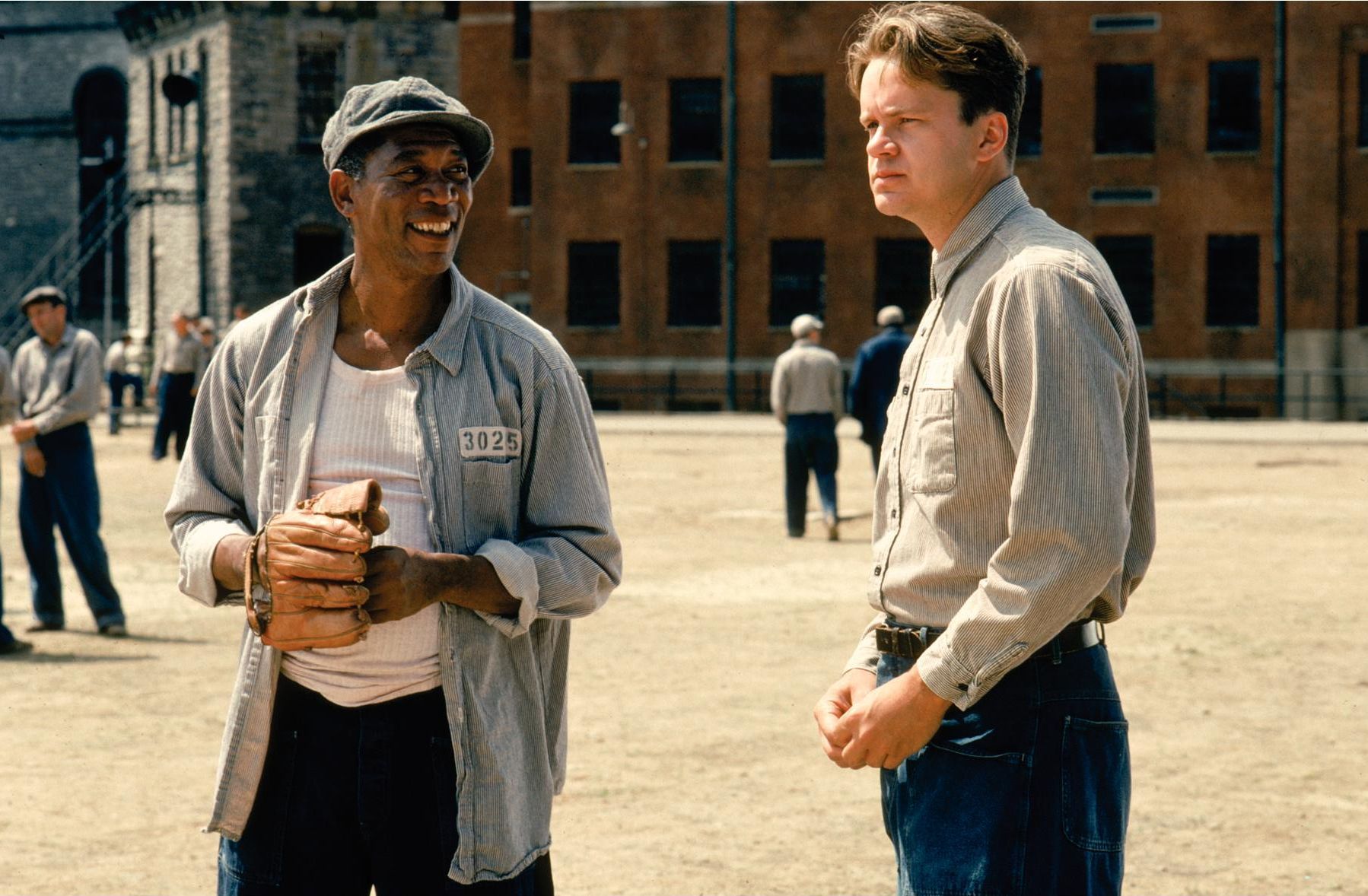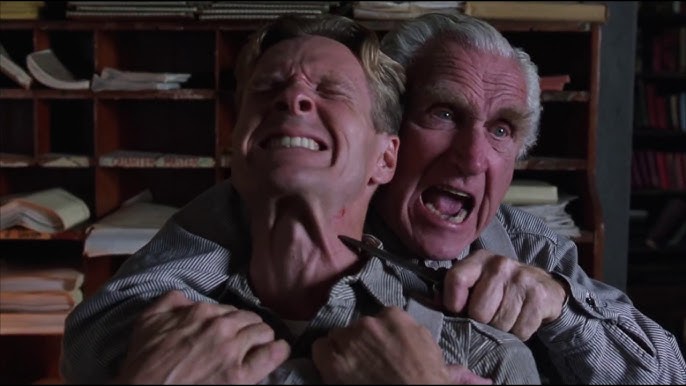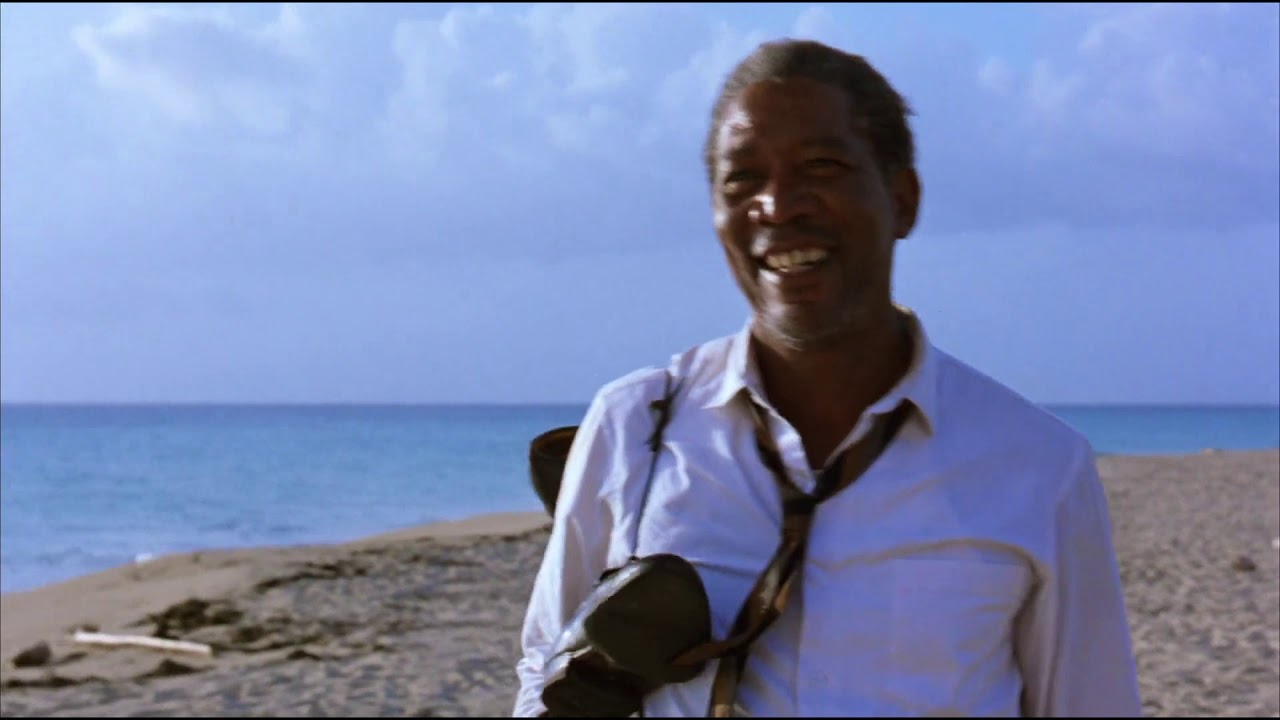🎬 The Shawshank Redemption (1994)

Review of The Shawshank Redemption (1994)
Few films have achieved the timeless resonance of The Shawshank Redemption. Directed by Frank Darabont and based on Stephen King’s novella Rita Hayworth and Shawshank Redemption, this 1994 masterpiece is a profound meditation on hope, friendship, and the resilience of the human spirit. With stellar performances, a deeply moving narrative, and an unforgettable conclusion, The Shawshank Redemption remains a cornerstone of cinematic storytelling.
A Story of Friendship and Perseverance
The film follows the journey of Andy Dufresne (Tim Robbins), a banker wrongfully convicted of murdering his wife and her lover, and sentenced to life in Shawshank State Penitentiary. Within the oppressive walls of the prison, Andy forges an unlikely friendship with Ellis “Red” Redding (Morgan Freeman), a seasoned inmate who becomes both his confidant and narrator of the story.
Andy’s quiet determination and unyielding hope set him apart from the hardened prisoners around him. As he navigates the brutal realities of prison life, he uses his intellect and resourcefulness to not only improve conditions for his fellow inmates but also to challenge the corruption within the system. Through his actions, Andy becomes a beacon of hope in a place designed to crush it.
Tim Robbins and Morgan Freeman: A Perfect Pair
The success of The Shawshank Redemption owes much to the extraordinary performances of its leads. Tim Robbins delivers a masterful portrayal of Andy Dufresne, capturing the character’s quiet strength and unwavering optimism. Robbins’s nuanced performance makes Andy both enigmatic and deeply relatable, drawing viewers into his journey of endurance and redemption.
Morgan Freeman’s portrayal of Red is equally iconic. As the film’s narrator, Freeman’s rich, velvety voice lends gravitas to the story, while his performance imbues Red with warmth, humor, and introspection. The chemistry between Robbins and Freeman elevates the film, creating a friendship that feels authentic and profoundly moving.
Frank Darabont’s Vision
Frank Darabont’s direction is a masterclass in storytelling. He expertly balances the grim realities of prison life with moments of quiet beauty and emotional resonance. The pacing is deliberate, allowing the narrative to unfold naturally while giving viewers time to connect with the characters and their struggles.
Darabont’s attention to detail is evident in every frame, from the stark cinematography by Roger Deakins to the meticulous recreation of Shawshank’s oppressive environment. The film’s visual storytelling is complemented by Thomas Newman’s evocative score, which underscores the emotional beats with subtlety and grace.
Themes of Hope and Redemption
At its core, The Shawshank Redemption is a story about hope—a fragile yet unyielding force that sustains Andy and, eventually, Red. The film explores how hope can be both a source of strength and a burden, as the characters wrestle with their circumstances and the possibility of change.
The concept of redemption is woven throughout the narrative, manifesting in both personal and systemic ways. Andy’s unwavering belief in justice and freedom contrasts sharply with the institutional corruption of Shawshank, creating a poignant commentary on the human capacity for resilience and renewal.
Unforgettable Supporting Cast
While Robbins and Freeman anchor the film, the supporting cast adds depth and complexity to the story. Bob Gunton’s portrayal of Warden Norton is chilling, embodying the hypocrisy and ruthlessness of institutional power. Clancy Brown’s performance as Captain Hadley is equally memorable, portraying a brutal enforcer whose loyalty to the system is as unyielding as his temper.
James Whitmore’s role as Brooks Hatlen, an elderly inmate struggling to adjust to life outside prison, provides one of the film’s most poignant subplots. Whitmore’s heartbreaking performance underscores the psychological toll of incarceration, adding another layer to the film’s exploration of freedom and confinement.
A Climax That Resonates
The film’s climax and resolution are nothing short of cinematic perfection. The revelation of Andy’s escape plan—meticulously executed over decades—is both thrilling and deeply satisfying. His triumph over the system is a testament to the power of perseverance and ingenuity, leaving viewers with a sense of catharsis and awe.
Red’s journey, meanwhile, provides a poignant counterpoint. His eventual embrace of hope and freedom serves as a reminder that redemption is always possible, even in the face of seemingly insurmountable odds. The film’s final scenes, set against the backdrop of a sunlit coastline, encapsulate its themes of renewal and liberation, leaving an indelible mark on the viewer.
Legacy and Cultural Impact
Despite its modest box office performance upon release, The Shawshank Redemption has grown into one of the most beloved films of all time. Its enduring popularity is reflected in its consistent presence atop “greatest films” lists, including its position as the highest-rated film on IMDb.
The film’s themes of hope, friendship, and resilience have resonated with audiences across generations, making it a source of inspiration and solace for countless viewers. Its influence can be seen in the many films and stories that have drawn from its narrative and emotional depth.
Conclusion: A Masterpiece for the Ages
The Shawshank Redemption is more than a film; it’s an experience that stays with you long after the credits roll. With its exceptional performances, masterful direction, and timeless themes, it is a testament to the power of storytelling and the enduring strength of the human spirit.
Whether you’re revisiting this classic or experiencing it for the first time, The Shawshank Redemption is a cinematic treasure that reaffirms the importance of hope, friendship, and perseverance. It is, quite simply, a masterpiece.












